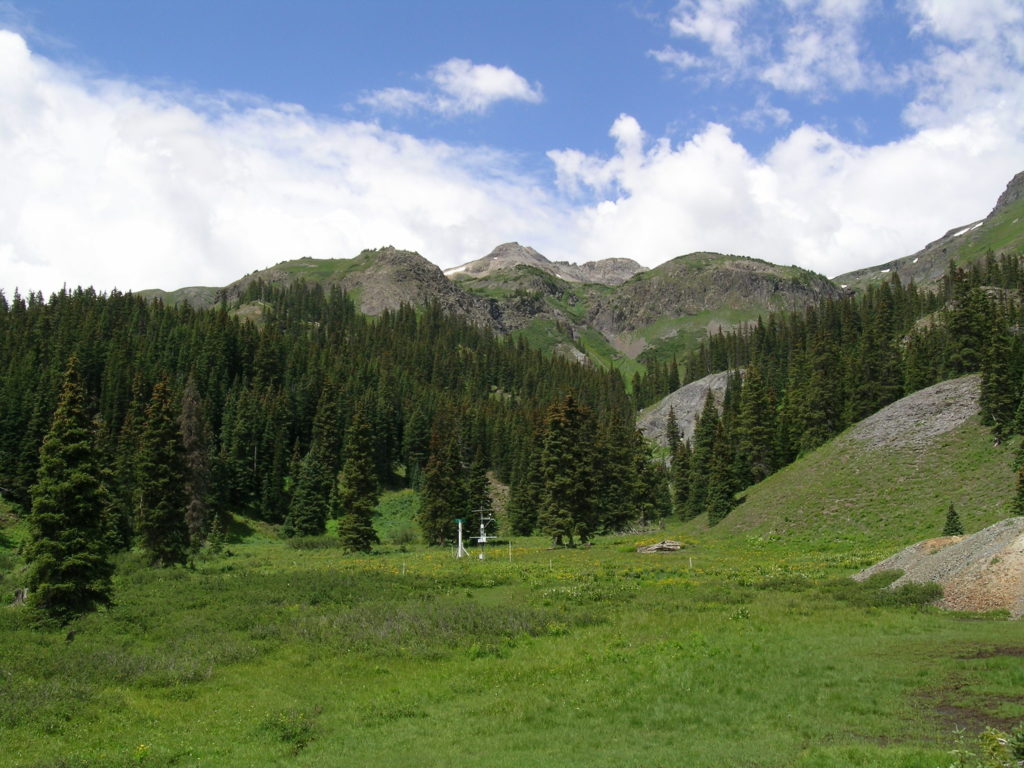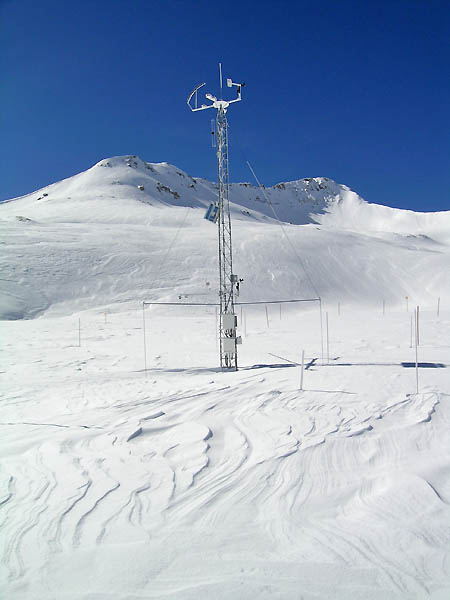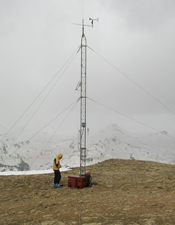POPULAR PRESS ON CSAS AND CSAS RESEARCH
- “Microplastics increasingly found in Colorado’s snowpack.” AP News on the plastics found in snow samples taken by CSAS and analyzed by the USGS. August 6, 2022
- “Coming Together to Fix a Broken Water Cycle”. Durango Herald discussed the workshop in a recent article. December 3, 2021
- Dust Snow is Making the Western Drought Worse, ByJennifer Oldham, National Geographic, July 14, 2021
- Dust on Snow: The nemesis of spring; how this phenomena impacts the environment and outdoor enthusiasts alike, by Robert Stump and Jeff Derry, Adventure Pro Magazine, February 23, 2021
- Here’s Why Avalanches Kill More People in Colorado than Any Other State, by Hannah Stoll, Out There Colorado, February 27, 2020
- NASA Hard at Work in Colorado on New Snow Sensing Satellite. by Hannah Stoll, Out There Colorado, May 10, 2020
- There’s Dust in Colorado’s Record Setting Winter Snowpack, by Luck Runyon, NPR, KUNC, May 6, 2019.
- Desert Dust Causes Early Snowmelt and Water Loss, Jonathan Romeo, Durango Herald, May 12, 2018
- Dust Speeds Up Snowpack Runoff In Rockies, by Luke Runyon, Here and Now, April 24, 2018
- The Rocky Mountains are Dusty, and It’s a Problem, by Luke Runyon, NPR, national website, April 22, 2018
- The Rocky Mountains are Dusty, and It’s a Problem, by Luke Runyon, NPR, KUNC website, April 19, 2018
- Colorado Snowpack Struggles in South, Colorado River Basin at 86 Percent, by Brent Gardner-Smith, April 11, 2018
- What Dust Can Tell Us About Melting Snow, by Jennifer Meckles, 9 News, April 11, 2018
- When Snowpack is the Concern, Science Keeps a Wary Eye out for Dust, by Grace Hood, Colorado Public Radio, April 3, 2018
- A Flurry of Research Illuminates Snow’s Foes, by Emily Benson, High Country News, March 27, 2018.
- Dust-on-Snow Controls Springtime River Rise in West, Carol Rasmussen, NASA, January 24, 2018.
- It’s Not Just High Temps Messing with Snow – It’s Dust, Brad Rassler, Outside Online, February 7, 2018.
- What if we could predict water availability with greater accuracy, Mary Shinn, Durango Herald, January 13, 2018
- Colorado’s Wimpy Winter has skiers, Water Managers Grumbling, Grace Hood, Colorado Public Radio, January 19, 2018.
- Durango TV News recently snowshoed into our research site to learn more about the SnowEx project.
- NASA Seeking to Unlock Secrets of Colorado Snowpack, by Nancy Lofholm. Colorado Public Radio: Colorado Matters, January 5, 2017.
- NASA breaking into snow biz, by Dennis Webb. The Daily Sentinel, December 2, 2016.
- NASA to study around Silverton as part of satellite development, by Jessica Pace. The Durango Herald, November 26, 2016.
- NASA plans a mission to Silverton, by Mark Esper. The Silverton Standard, November 17, 2016.
- Lack of red dust from desert means slow and steady Colorado snowmelt, by Jason Blevins. The Denver Post, May 6, 2016.
- ‘Desert Dust’ causing Colorado’s snowpack to melt early, by Cory Reppenhagen. Denver 7 News Channel, March 27, 2016.
- Early Snowmelt on the Rockies threatens Arizona’s Water Supply, by Brandon Loomis. Arizona Republic, Aug 20, 2015.
 Dust on Rockies Snow Quickens Melting, Disrupts Water Supplies, by Ana Campoy. Wall Street Journal. Jan 9, 2014
Dust on Rockies Snow Quickens Melting, Disrupts Water Supplies, by Ana Campoy. Wall Street Journal. Jan 9, 2014- Colorado snowpack off to a poor start, by Bob Berwyn. Summit County Citizens Voice. Nov 7, 2012.
- CSAS: Ten Years in Silverton by Chris Landry. The Silverton Standard. October 25, 2012.
- Our rapidly shrinking water supply by Eric Ming. The Watch Newspapers, March 2, 2012.
 Air Quality Difficult to Gauge in Dustier American West by Kirk Johnson.
Air Quality Difficult to Gauge in Dustier American West by Kirk Johnson.
New York Times, Dec 10, 2011.- Why Development in the Desert Means Lower Rivers and Less Snowpack in the Rockies, By Allen Best. New West Development. November 30, 2011.
- Snow Safety: The Inside Scoop with Protect Our Winters, by Penn Newhard. The North Face, Nov. 28, 2011.
- Colorado Natural Heritage Program Blog: Cool Climate Collaboration, November 23, 2011
- Press in response to the 2010 study published in the Proceedings of the National Academy of Sciences:
 LA Times: Dust cuts Colorado River flow, scientists say
LA Times: Dust cuts Colorado River flow, scientists say- LA Times Blog: Would curbing desert dust help the Colorado River?
- Reuters/Yale Environment 360: Dust Hastens Snowmelt in Colorado
- NASA News: NASA Funded Study Shows Desert Dust Cuts Colorado River Flow
- USGS News: Dust Hastens Colorado River Snowmelt, Cuts Flow: Restoring Desert Soils Could Lessen Impacts of Climate Change
- Science and Technology: Desert Dust reduces Colorado River Flow, says new study
- NSF: Windborne Dust on High Peaks Dampens Colorado River Runoff
- Dust, snow make for problematic mix for skiers by Scott Willoughby. Denver Post. April 20 2010.
- Dust on crust: Dusting off wilderness by Will Sanda. Durango Telegraph. April 22 Cover Story.
- Dust settling on local peaks has a big impact by Mike Horn. Crested Butte News. April 21, 2010.
- Dust in snow causes early melting in region’s high country by Scott Rappold. Colorado Springs Gazette.
April 17, 2010. - Dust-on-Snow: On Spring Winds, Something Wicked This Way Comes. Earlier snowmelt, altered water supplies, result by Cheryl Dybas. National Science Foundation Discovery. April 2, 2010.
- Is Pink Snow Hurting the Vail Valley? – Sarah Mausolf. Vail Daily News. March 24 2010.
 Visionaries: Researcher Tom Painter is more worried about dirty snow than global warming – Cameron Walker. Skiing Magazine. Feb/March 2010.
Visionaries: Researcher Tom Painter is more worried about dirty snow than global warming – Cameron Walker. Skiing Magazine. Feb/March 2010.
- “It started out as a basic question: How is dust affecting the snowpack? Eventually it became a widespread investigation into dust’s role in snowmelt, hydrology, and regional climate change, along with how dust might screw up the ski season.”
- “In 2003, Painter began working on those questions with Chris Landry, … director of the Center for Snow and Avalanche Studies in Silverton, Colorado.”
- “When Painter, Landry, and a few colleagues pulled together measurements from Colorado’s San Juan Mountains, they found that dust-covered snow melted between 18 and 50 days earlier than dirt-free snow cover.”
- High stakes snow speculation: gauging our water future – Mike Horn. Crested Butte News. January 27, 2010.
- Chris Landry, director for the Center for Snow and Avalanche Studies in Silverton, Colo., traveled around Colorado last spring assessing damage done to the snowpack by the 12 layers of dust (the most ever recorded) that fell starting in October 2008. His findings were alarming.
- “What we are observing is snowmelt advanced a month as a result of dust,” Landry says. “Instead of water managers dealing with this in 2050 [due to long-term climate change], they’re dealing with it now.
- Dust levels may have melted snow – Zach Fridell. Steamboat Today. August 21, 2009.
- Chris Landry, executive director of the Center for Snow and Avalanche Studies in Silverton, said the unusually high level of dust on the snow could have contributed to the fast melt-off.
- Landry said the snow in the study area had 55 grams of particles per square meter in spring 2009, compared to 12 grams per square meter in 2008.
 La fonte accélérée des neiges de l’Ouest américain inquiète les agriculteurs: Le phénoméne, provoqué par des tempêtes de poussiére, menace l’irrigation des cultures – Le Monde. June 5, 2009.
La fonte accélérée des neiges de l’Ouest américain inquiète les agriculteurs: Le phénoméne, provoqué par des tempêtes de poussiére, menace l’irrigation des cultures – Le Monde. June 5, 2009. Dust storms speed snowmelt in the West – Nicholas Riccardi. Los Angeles Times. May 24, 2009.
Dust storms speed snowmelt in the West – Nicholas Riccardi. Los Angeles Times. May 24, 2009.
- Painter [in association with CSAS and the University of Utah Snow Optics Lab] has found that dust can speed up snowmelt by as much as 35 days — in other words, snow that would normally disappear by May 15 would instead be gone by April 10.
- Spring runoff to be fast and furious: Snowpack disapearing because of dust storms; Crystal River nears flood stage – Scott Condon. Aspen Times. May 2009.
- Three of the storms that blew in from the Colorado Plateau farther to the west were particularly intense, according to Chris Landry, director of the Center for Snow and Avalanche Studies. Landry, a former resident of the Crystal River Valley, began studying the dust’s impacts on the snowpack with Tom Painter of the University of Utah in the winter of 2003-04. They found that a particularly intense dust storm in February 2006 accelerated teh melting of the snowpack by about 30 days that spring. The three dust storms that hit March 22, 29 and April 3 this season equaled the 2006 event in intensity.
- Landry said water for crops will be plentiful before farmers need it in large amounts. Less water might be available in July when farmers depend on it.
- Landry said that could produce problems for water managers. They will have a shorter time to prepare reservoirs for inflow.
 Climate change, water shortages conspire to create 21st century Dust Bowl – Scott Streater. New York Times. May 14, 2009.
Climate change, water shortages conspire to create 21st century Dust Bowl – Scott Streater. New York Times. May 14, 2009.
- Dust storms accelerated by a warming climate have covered the Rocky Mountains with dirt whose heat-trapping properties have caused snowpacks to melt weeks earlier than norms, worrying officials in Colorado about drastic water shortages by late summer.
- The Dangers of Dark Snow – Dave Buchanan. The Daily Sentinel [Grand Junction, CO]. May 14, 2009.
- Dust on snowpack is a problem. It makes snow darker. And dark snow melts faster. Too fast. In fact, it has a much bigger effect on the snow than global warming.
- Dust on the horizon: Record number of dust storms threatens the Southwest – Will Sands. Durango Telegraph. April 30, 2009.
- If dust seems mroe severe than before, you’re not imagining it. According to Silverton’s Center for Snow and Avalanche Studies there have been 13 dust storms so far this winter, the most since the center began tracking them seven years ago.

- Dust storms spur environmental fears: Increase in dirt affects ecosystems in Western states – Juliet Eilperin, The Washington Post. April 23, 2009.
- …Silverton, Colo., seems an unlikely place for a dust storm, especially with two feet of snow ont he ground. “It was almost surreal,” recalled Landry, executive director of the Center for Snow and Avalanche Studies.
- “More important, an increasing amount of airborne dust is blanketing the region, affecting how fast the snowpack melts, when local plants bloom and what quality of air residents are breathing.”
- Rust-red Friday: Massive dust storm blankets much of mountains across centeral, southwest Colorado – Chris Dickey. Gunnison Country Times. April 9, 2009.
- “Some longtime weather watchers called Friday’s dust storm the worst they’d ever witnessed,” according to Chris Landry, who closely monitors “dust on snow” events for the Center for Snow and Avalanche Studies in Silverton.
- “Satellite imagery clearly showed that most of the northeastern corner of Arizona was releasing dust plumes heading northeastward…” Landry observed in a report he sends to water watchers…
- “Landry reported that Friday actually marked the eighth significant dust event to occur in Colorado this winter season”
- “The major ramification is the timing and intensity of snow melt,” Landry explained.
- Dirt-dusted slopes may hasten mountain snowmelt – Catherine Lutz, Aspen Daily News. March 2009.
- ” Dust from the Colorado Plateau being deposited on local mountains is not altogether unusual … but these events are of concern because they may hasten the end of the ski season.”
- “When exposed at the surface, the dust reduces the reflectivity of the snow, and it directly absorbs solar radiation, so until it’s gone the dust is dramatically accelerating snowmelt”, said Chris Landry, director of the Center for Snow and Avalanche Studies in Silverton.
- “Landry said one study showed snowmelt can be advanced by four to six weeks because of winter dust storms.”
- Snow Researchers set to do dust hunting: Researchers studying dust effects on snowpack – Idaho Mountain Express. Feb 2009.
- ” Chris Landry will soon be back out looking for clues to help predict water flows and usage…”
- “Landry and his associates now have contracts with eight major water agencies in Colorado…”
- “We’re quite excited about how this has evolved. It has gone from basic research to fully applied science in a very short time”
- Silverton Study Funded in Water Bill – Joe Hanel, The Durango Herald. Feb 13, 2009.
- ” This year’s bill has no large projects in Southwest Colorado, but it does include funding for Silverton’s Center for Snow & Avalanche Studies to study effects of dust on snowmelt.”
- “Recent research from the center has shown that snow covered with a thin layer of dus will melt much earlier than clean snow, possibly causing serious consequences for irrigators.
- High Peaks, Dirty Snow – Forest Magazine by Allen Best. Winter 2008
- Kicking up dust. How did desert dust land in high-mountain lakes? by Allen Best. Aspen Times, July 2008
 National Public Radio devoted stories on CSAS research May, 2006 – http://www.npr.org/templates/story/story.php?storyId=5415308 (Snow effect) http://www.npr.org/templates/story/story.php?storyId=5415315(Dust emission)
National Public Radio devoted stories on CSAS research May, 2006 – http://www.npr.org/templates/story/story.php?storyId=5415308 (Snow effect) http://www.npr.org/templates/story/story.php?storyId=5415315(Dust emission)- High Country News devoted story ‘Dust and Snow’, May, 2006 http://www.hcn.org/servlets/hcn.Article?article_id=16326 (this story contributed to Michelle Nijhuis’ winning the 2006 AAAS Science Journalism prize)
- Backcountry Magazine devoted story ‘Colorado’s dirty little secret’, December, 2006.




